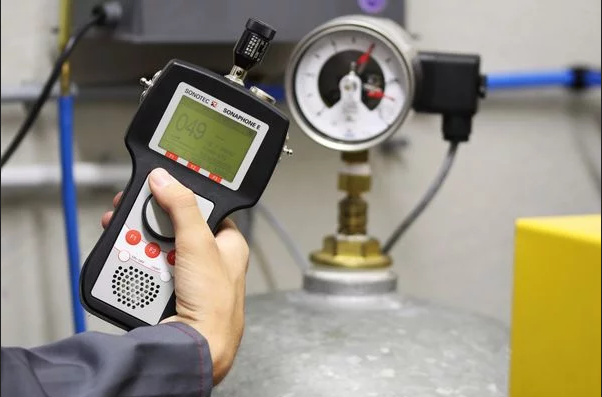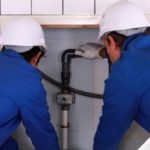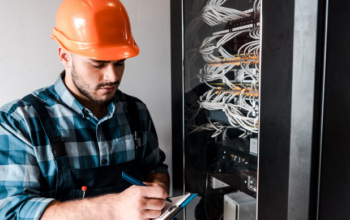Leaks can appear due to various factors, leading to severe consequences such as property damage, environmental pollution, and health hazards. Therefore, detecting and repairing them is an important task that requires the right approach.
Types of Leak Detection Methods
Several leak detection methods are available, but they serve different purposes. The technique depends on the type of leak and the environment. Choosing the best one is paramount as it can save time, money, and resources.
Visual Inspection
Visual inspection is a simple but effective method involving looking for signs of water damage or other leak indicators. The operator would do this with the naked eye or using specialized tools such as flashlights and cameras. This technique is often applicable for plumbing leaks, such as those around toilets, sinks, and showers. It is also suitable for checking water damage on walls and roofs.
Ultrasonic Leak Detector
An ultrasonic leak detector is a device that uses sound waves to detect the presence of a leak. It works by emitting high-frequency sound waves and then listening for the sound of escaping gas or water. This method detects gas and water leaks in tight spaces or difficult-to-reach areas.
When the device detects a leak, it will indicate the location and size on the screen. This technique is popular for detecting leaks in pipes, valves, and tanks.
Soap Bubble Test
The soap bubble test is a simple and inexpensive method involving applying a soapy solution to the suspected leak area. This technique works by detecting the presence of air bubbles caused by the escaping gas. If there is a leak, bubbles will form at the point where the gas is escaping.
The soap bubble test detects leaks in pipes and valves. It is important to note that this method is only effective at detecting gas leaks, not water leaks.
Electronic Leak Detector
An electronic leak detector is a device that uses sound, light, or radio waves to detect leaks in gas and liquid pipes. This device works by sending out signals and measuring the strength of what’s reflected. If there is a leak, the returning signal will be weaker than expected.
You will find electronic leak detectors in industrial settings. They ensure that pipelines and equipment are safe and secure. This technique identifies even tiny leaks quickly and accurately. It locates them before they become a problem to prevent accidents and reduce the cost of repairs.
Seal Integrity Test
The seal integrity test is a practical leak detection method for identifying leaks in sealed systems. This method uses a pressure differential to detect a breach in the seal between two points. It implies pressurizing the system with a fluid or gas and then measuring the pressure between two points.
If a seal is intact, the pressure differential will remain constant, but if there is a breach, air bubbles will appear. This method is widespread in the automotive, industrial, and food and beverage industries.
The importance of leak-tightness in F&B processing is due to the presence of various food-borne pathogens which can enter packaging through a breach. Seal integrity test methods can help to detect such breaches and prevent contamination. This method is also often used in the automotive industry to detect leaks in fuel tanks and air conditioning systems.
Conclusion
Leak detection is an important task that requires the right approach. Different methods have advantages and disadvantages, so choosing the best one for your needs is important.
If you are looking for a simple yet budget-friendly way to maintain the quality of your products, improve your materials and processes. The seal integrity method stands out as the best approach for detecting leaks in sealed systems due to its accuracy, reliability, and cost-effectiveness.
Related Posts












